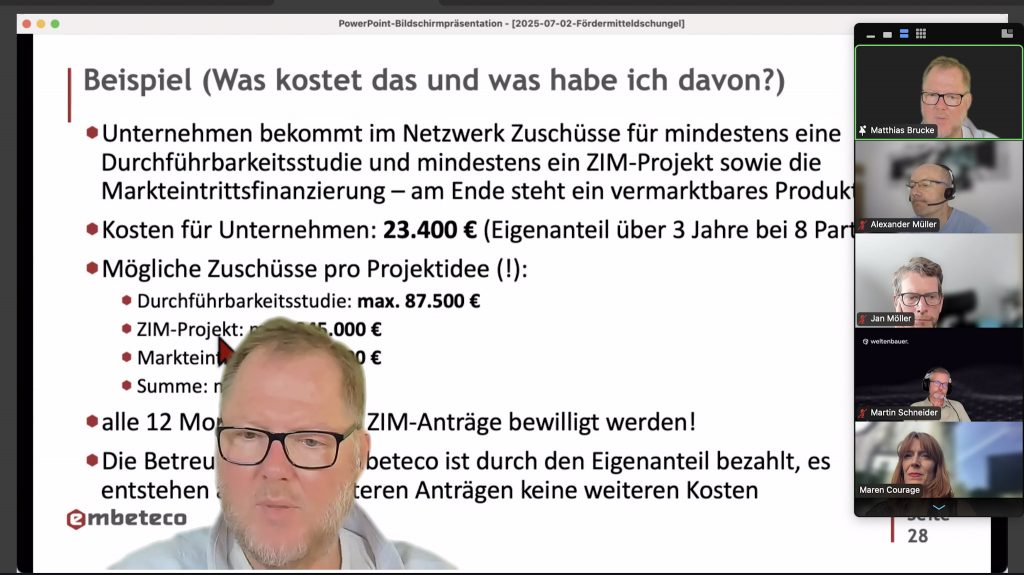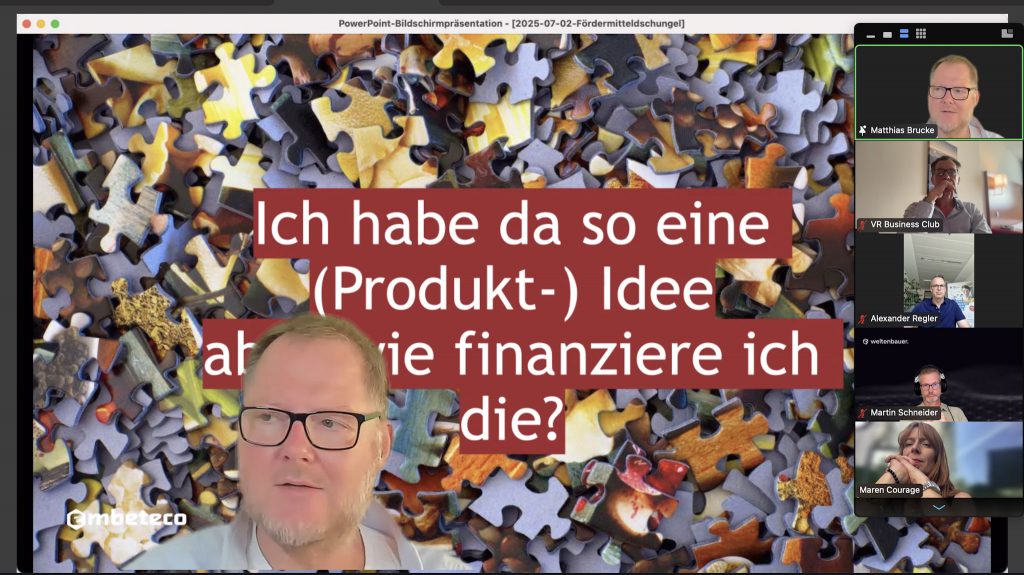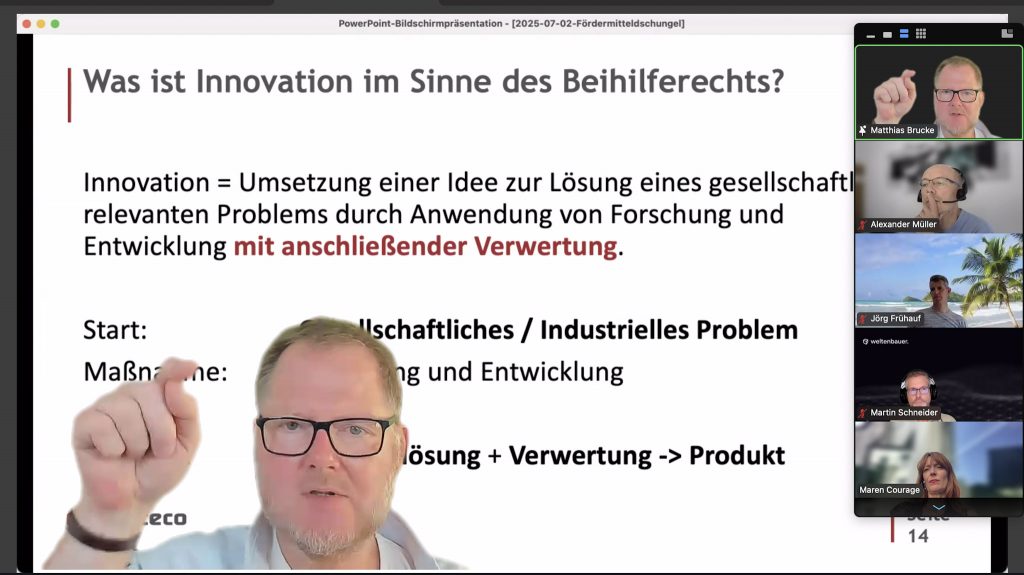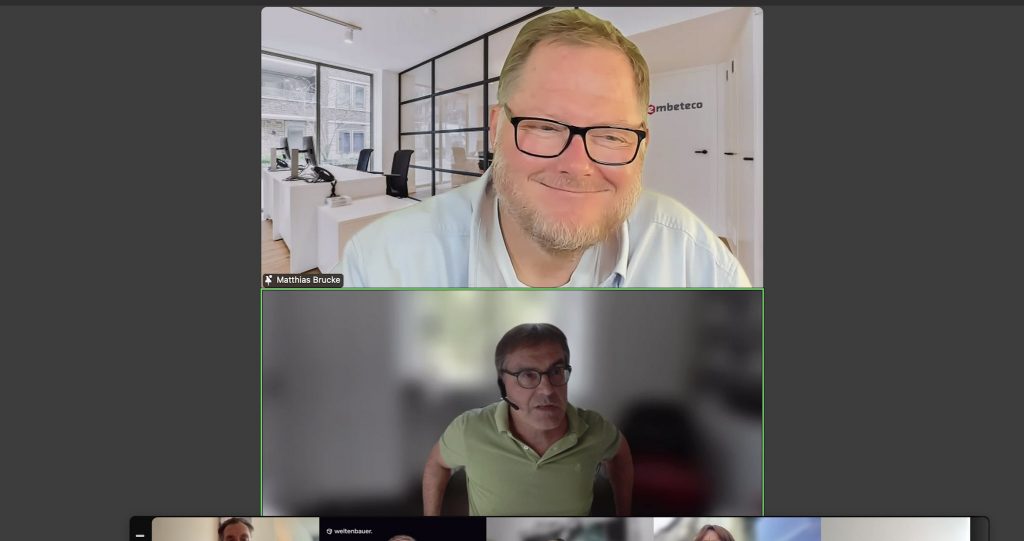How XR and AI companies get funding – Review of the online event with Matthias Brucke
On July 2, the VR Business Club Online focused on a question that is of central importance to many tech companies: How do I finance my innovations – with government support?
Under the title “Tips for XR and AI users and developers on securing government funding”, we had the pleasure of welcoming Matthias Brucke from embeteco as a guest speaker. With his many years of experience in funding consultancy, he not only brought a wealth of knowledge with him, but also plenty of practical tips on how to successfully navigate through the funding jungle.
From buzzword to real promotion: why innovation matters
The introduction to the topic quickly made it clear why it is so important to deal with funding programs right now. Technological development is progressing at a breathtaking pace. Matthias recalled an impressive figure: 125 billion networked devices are expected to be in use worldwide by 2030. Innovation is therefore no longer just an optional extra – it is a survival strategy.
But innovation projects cost money. It’s a good thing that there are numerous programs at EU, federal and state level that address precisely this issue. The most attractive form of support? Non-repayable grants.
Two programs you need to know
Matthias focused on two funding programs in particular: the research allowance and the Central Innovation Program for SMEs (ZIM).
The research allowance allows companies to be reimbursed retroactively for up to 35% of their personnel costs for innovation projects over the last four years – without any repayment obligation. A subsidy that many companies have not even considered.
ZIM, on the other hand, focuses on future projects. With an annual budget of around 500 million euros and a funding rate of up to 90% of salaries, it is a real heavyweight among innovation programs. Small networks of companies – from the XR or AI sector, for example – can also receive joint funding. Costs for trade fair appearances and patents can also be subsidized.
Bureaucracy? Controllable!
Of course, the practical side was also discussed. Because when it comes to government funding, many people fear the paperwork. But Matthias was able to reassure them: With clear templates, digital tools and good advice, the effort can be kept well under control. A ZIM application for a feasibility study, for example, is often only three to four pages long. And the funds are usually paid out within 7 to 14 days – faster than some customer invoices.
His company, embeteco, supports both individual companies on a commission basis (approx. 15%) and networks of six to eight companies in return for a monthly contribution of around 650 euros over three years. That sounds like a worthwhile investment – especially if it means innovative ideas become reality.
What’s next?
As a next step, Matthias will provide information and links on the research grant, which will then be distributed via the VR Business Club. A follow-up meeting is also planned to discuss possible collaborations and participation models.
Our Conclusion
The event showed in an entertaining and practical way that government funding is not a closed book. Rather, they offer real opportunities – especially for companies that want to break new ground in the field of XR and AI. With the right strategy, professional support and a little courage to apply, innovations can not only be conceived, but also financed.





In for more?
The VR Business Club will continue to address exciting topics relating to digitalization, technology and funding. Stay tuned – it’s worth it!


